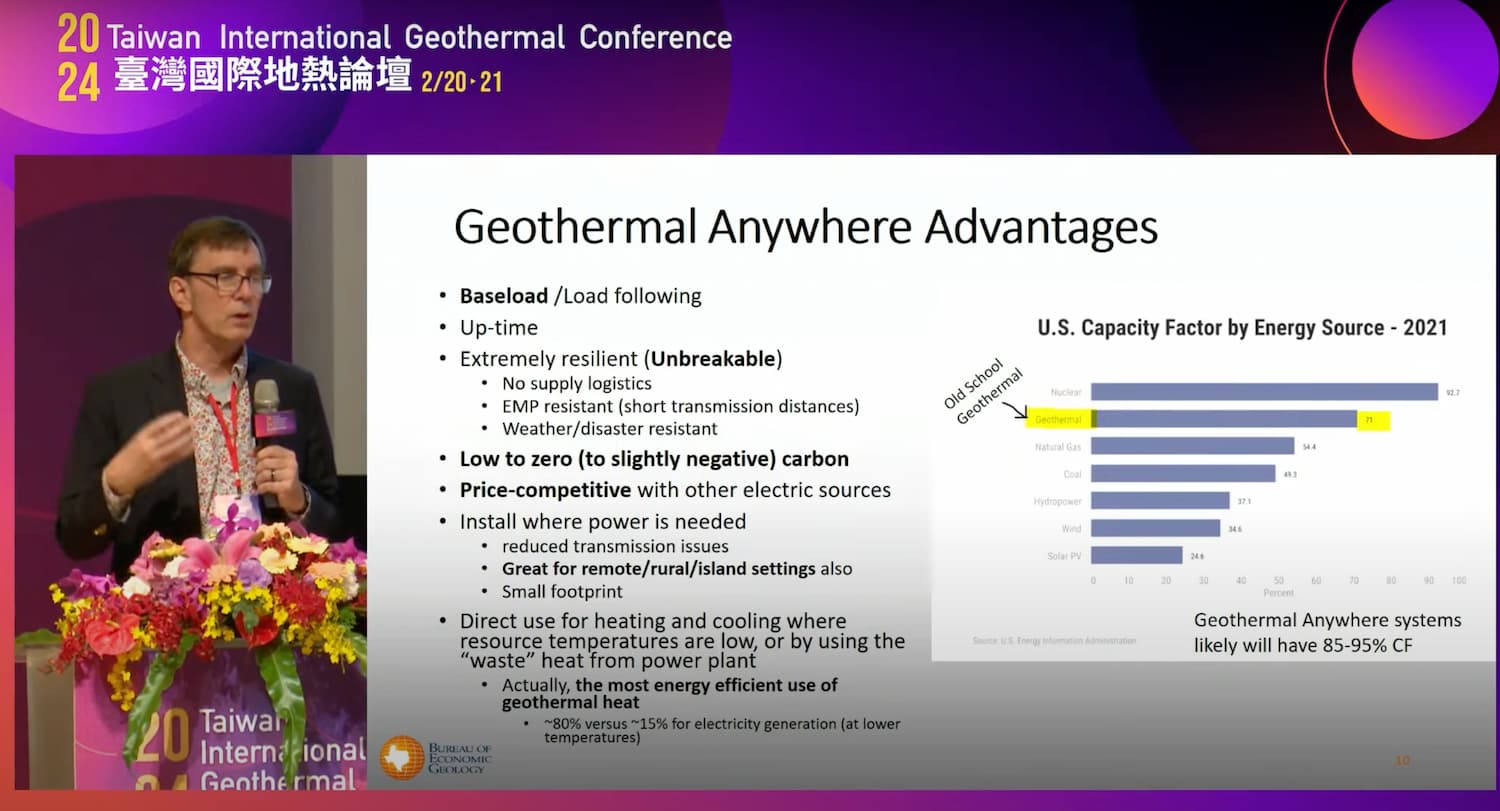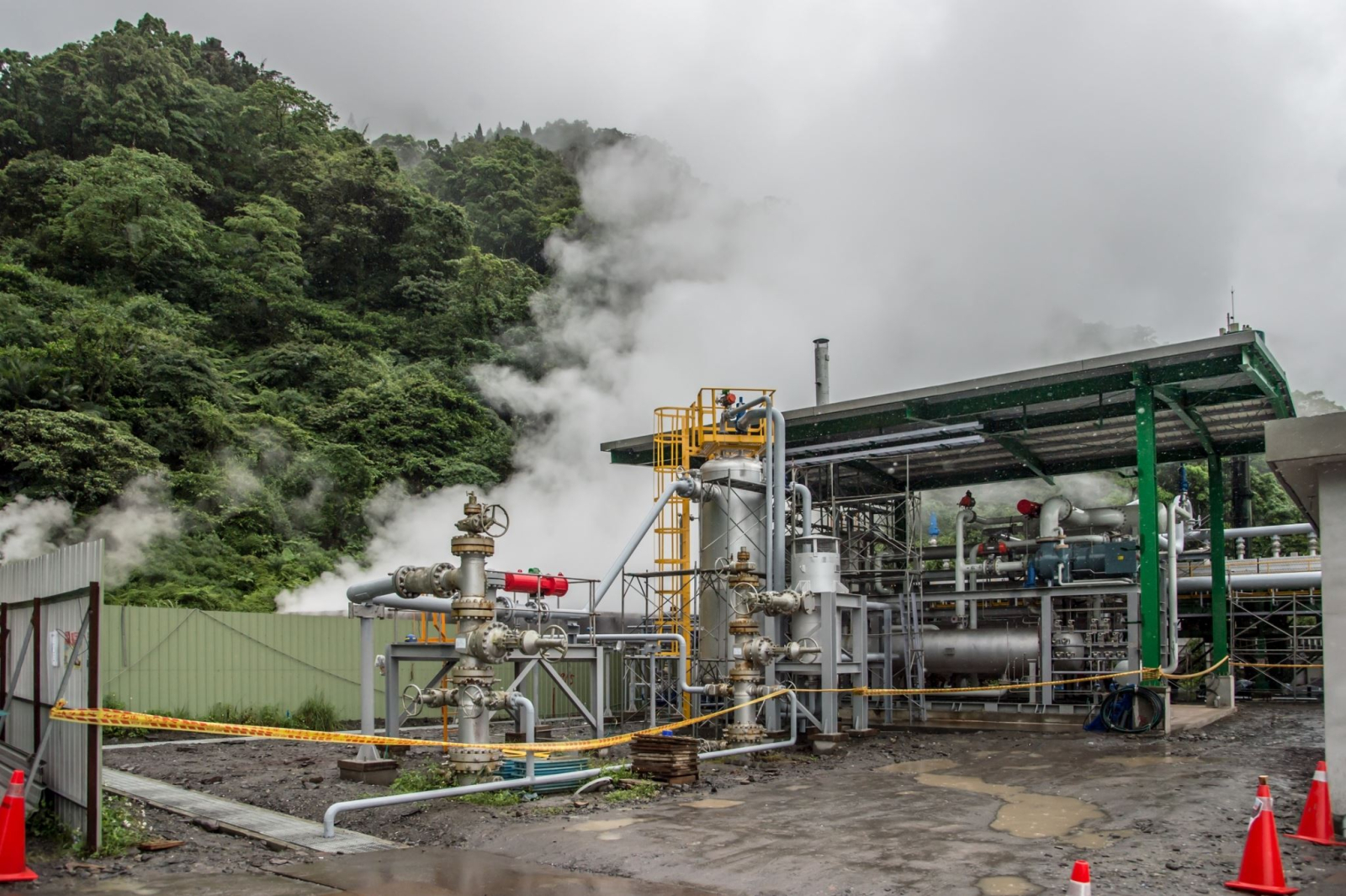.jpg)
(Photo: Ministry of Economic Affairs)
Taiwan International Geothermal Conference returned for its second edition on Feb. 20 to 21 in Taipei, bringing together 47 companies and more than 600 experts to exchange ideas on geothermal development.
Held by the Ministry of Economic Affairs (MOEA), the event featured speakers from the U.S., the U.K., Sweden, Italy, Japan, and New Zealand to share experiences of geothermal technology, plant development, and project management.
Taiwan mulls relaxing limitation on land development for geothermal power
According to the Industrial Technology Research Institute’s primary estimate, Taiwan has a potential shallow geothermal energy capacity of 1 GW and 40 GW of deep geothermal energy.
Geothermal energy is a kind of base load power, which is not as vulnerable to climate as solar and wind energy, and that’s why it plays a crucial role in energy transition, said MOEA Deputy Minister Tseng Wen-sheng (曾文生), adding that he expects Taiwan to introduce advanced technologies to help increase geothermal energy to 6 GW by 2050.
Taiwan currently has 24 geothermal projects in operation and pipeline across Taipei’s Datunshan region, Yilan County, and Taitung County, with a total planned capacity of 61.75 MW, Tseng said.
MOEA Deputy Minister Tseng Wen-sheng (Photo: Hsu Tsu-lin)
The difference between Taiwan and other countries in terms of geothermal energy development is that Taiwan’s land use intensity is high, making land management a key issue in developing geothermal, Tseng said.
MOEA and relevant sectors have been discussing plans to optimize land management and compensation. Moreover, the government has adopted a “high to low” mechanism for FIT rates for geothermal energy to reflect initial costs and established an office for related services.
Chairman Lee Shun-chin (李順欽) of CPC Corporation said that hydrogen and geothermal are the company’s two pillars for developing green energy, and it will develop geothermal through three aspects, including “from exploration to energy generation,” “independent investment first and co-investment later,” and “R&D first and pilot production later.”
The company has commissioned the Renze geothermal plant in Yilan last year, while a 4-MW project in Tuchang, Yilan is scheduled to come into operation this April. Another 5 MW is expected to connect to the grid next year.
US geothermal EPC calls for investment expansion and simplified procedure
This year, several foreign companies, including SLB New Energy, GreenFire Energy, Baker Hughes, MB Century, and Ormat, joined the conference to share global geothermal and technology trends to help enhance drilling management of Taiwanese companies and facilitate the establishment of geothermal industrial chain.
Geothermal energy development requires large amount of investment for exploration in early stage. Ann Roberton-Tait, president of SLB’s affiliated company GeothermEx, said that the government needs to take the leading role to accelerate geothermal development. Taking the U.S. as an example, she said that the United States Geological Survey has invested a lot of resources in the 1960s in exploration, and then stipulated new energy rules in 1978 to subsidize geothermal development, attracting investment from private sectors.
The Inflation Reduction Act also provides incentives that can help businesses reduce risk and boost industry growth. She suggests the Taiwanese government establish solid, efficient, and transparent subsidy scheme to assist companies with project development application complying with local law.
GeothermEx’s president Ann Roberton-Tait shares her views on how to attract business investment in geothermal. (Photo: Hsu Tsu-lin)
“Geothermal Anywhere” plan to free limitation on project location
Associate Director Ken Wisian of the Environmental Division, Bureau of Economic Geology of the University of Texas at Austin shared a project called “Geothermal Anywhere,” saying that the university has made significant progress in geothermal technology in the past years, such as advancements in supercritical carbon dioxide (SCCO2) and heat to electricity technologies, removing the limitation on project location.
According to Wisian, geothermal projects were usually located in the west side of Rocky Mountains, but now there are also several projects in Texas. If technology becomes mature in the future, geothermal energy could be explored at any place, providing power to schools or hospitals nearby.
The US army is actively engaging in the “Geothermal Anywhere” project, for they believe geothermal will play a critical role in national defense, offering real-time, stable, and cost-effective electricity. Moreover, the production can reach low, zero or even negative carbon.

Wisian shares advantages of “Geothermal Anywhere” project. (Livestream of Taiwan International Geothermal Conference)
British expert suggests introduction of comprehensive technology and experience to Taiwan
Kevin Gray, director of Black Reiver Consulting, said that Taiwan embodies vast potential for geothermal energy, while the semiconductor industry has high demand for green electricity and is sensitive to electricity price fluctuation, and thus geothermal is the best option as the base load power.
However, quite a few countries poured in lots of funds in developing geothermal in the past but only attracted investors that withdrew once they obtained subsidy. In light of this, Gray suggested Taiwan introducing drilling talents and experiences instead of only purchasing fine equipment to build a complete industrial chain.

The Renze geothermal power plant in Yilan (Photo: Yilan County Government)





